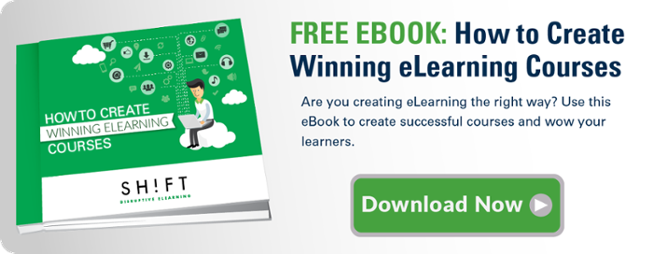Have you ever felt like your courses are packed with facts and figures, yet your learners just aren't retaining the information? Why do you think that is? Could it be that the way we're presenting information just isn't sticking?
Think about it: simply telling someone to be careful with cigarettes isn't nearly as memorable as sharing a vivid story about a cigarette that caused a massive house fire. Stories like these stick because they show real consequences, making the lesson much more impactful.
So, why do some eLearning designers rely solely on blocks of text and facts? It's a common mistake to think that more information equals better learning.
But what if we could achieve more by using less? What if we used powerful examples to guide our learners through the content?
In this article, we're diving into the transformative power of examples in eLearning. By integrating real-life stories and scenarios, we can give our learners a "compass" to navigate complex information.
Giving them examples is like giving learners a compass so they can actually find their way.
Here are some easy ways to start incorporating examples into your eLearning courses:
1) Screenshots
Screenshots are a fantastic tool for eLearning because they provide learners with real, concrete examples rather than abstract descriptions. This method of teaching is not only intuitive but also significantly enhances memory retention.
For instance, when teaching software usage, a textual description of where to click and what to do can be confusing. Instead, a screenshot showing the exact location of an icon or menu option can make the instructions crystal clear.
Learners can visually match what they see on their screens with what's shown in the screenshot, making the learning process much more straightforward and effective.
Consider a scenario where you need to train employees on a new project management tool. Instead of describing each step, you could use screenshots to illustrate:
- How to set up a new project.
- How to assign tasks to team members.
- How to track project progress.
- How to generate reports.
You could further enhance these screenshots by adding arrows or circles to highlight areas of interest, or text boxes to provide additional context. This not only makes the learning experience more engaging but also ensures that learners are not lost or overwhelmed by the interface.
2) Scenarios and Stories
Scenarios and stories are powerful tools in eLearning because they immerse learners in real-life situations, making the content relatable and memorable.
By crafting stories that reflect actual challenges, you allow learners to see the practical application of information in a context they can understand and empathize with.
For example, consider a course on sexual harassment. Instead of merely listing dos and don'ts, you can create a narrative around a new employee who receives inappropriate WhatsApp messages from her boss. This scenario not only illustrates the issue vividly but also prompts learners to think through the steps the employee could take to address the situation. Detailing the employee's thought process, the actions taken, and the consequences of those actions brings the lesson to life.
This storytelling approach is particularly effective because it engages learners emotionally and intellectually. They are not just passive recipients of information; they are actively involved in analyzing the scenario and considering their own responses.
Actionable Tip: When creating eLearning scenarios, always include decision points where learners can choose different actions and see varying outcomes. This interactive element not only enhances engagement but also helps learners understand the repercussions of their choices, reinforcing the learning objectives in a dynamic way.
Scenario-Planning Tools: 5 Step Plan to Create Your Own Scenario Based eLearning Course
3) Case Studies
Case studies are an excellent way to incorporate concrete examples into eLearning, making complex topics more accessible and relatable. By analyzing real-life instances, learners can connect theoretical concepts to practical applications, enhancing their understanding and retention of the material.
For instance, in courses on environmental compliance, using a case study about a company that suffered financial and reputational losses due to non-compliance provides a vivid example that goes beyond abstract principles.
Learners see firsthand the real-world consequences of ignoring environmental regulations—not just on the environment but also on the company's bottom line and public image.
This method is particularly valuable for teaching judgment, decision-making skills, and best practices. Case studies often present complex situations without straightforward solutions or may include incomplete information, reflecting the real challenges learners might face in their professional lives.
Actionable Tip: To effectively integrate case studies into your eLearning courses, create scenarios that require learners to analyze the situation, make decisions, and then reflect on the potential outcomes of those decisions. This not only makes the learning experience more interactive but also deepens learners' engagement by involving them directly in the problem-solving process.
Also read: Create Better eLearning Courses: 8 Techniques to Engage Your Audience
4) Visual Metaphors
Visual metaphors are an excellent method for adding illustrative examples to eLearning content, helping to demystify complex or unfamiliar topics. By connecting new information to well-known images, these metaphors facilitate understanding and retention.
For example, you might use a pencil to represent the phases of a new company process in an eLearning course. Each part of the pencil—the tip, the body, and the eraser—could symbolize different stages or aspects of the process. This visual metaphor helps learners quickly grasp how each part of the process connects and operates, making abstract concepts more tangible and relatable.
This technique is particularly effective because it leverages the learners' pre-existing knowledge, using familiar visuals to create a bridge to new information. This not only makes the learning process smoother but also encourages deeper engagement and critical thinking about the material.
More Ideas for Using Visual Metaphors in eLearning:
-
Finance and Economics: Use the metaphor of water flow to explain cash flow in a business. Show how money moves through a company like water through a series of pipes, with faucets representing revenue streams and leaks showing losses or expenses.
-
Leadership Training: Illustrate leadership pathways using a compass metaphor. Different directions can represent various leadership styles or decisions, helping learners navigate the complexities of leadership roles.
-
Health and Safety Training: Employ a shield metaphor to discuss protective measures in the workplace. Each part of the shield can represent different safety protocols that collectively protect the worker.
-
Technical Training: Use a toolbox metaphor where each tool represents a specific skill or piece of knowledge necessary for a job. This can help learners visualize how different skills interact and support one another.

Image Source: Yellopencil.com
5) Video
In today's digital age, learners are inundated with multimedia content daily, making video an ideal format to capture their attention and cater to their learning preferences. Combining both audio and visual elements, videos create a rich, immersive learning experience that can convey complex information in an engaging and digestible way.
Take, for example, teaching seasonal workers how to gift-wrap during the busy holiday season. A well-crafted video can demonstrate the wrapping process in action, showing precisely how to fold corners, where to place tape, and how to tie the ribbon. This visual method is not only faster but also more effective than written instructions, which can be open to interpretation and harder to follow.
Videos are equally effective for more complex training, such as safety procedures or software tutorials. For safety training, a video can simulate emergency situations where workers learn to respond correctly without the real-world risks. In software training, screencasts can guide users through the interface, demonstrating features and functions live on-screen.
Specific Tips for Creating Engaging eLearning Videos:
-
Keep It Short and Focused: Aim for videos that are concise and targeted to specific learning objectives. Shorter videos (2-5 minutes) help maintain learner attention and are easier to digest.
-
Use Real-Life Scenarios: Incorporate scenarios that learners might encounter in their jobs. This relevance helps them visualize how they can apply what they're learning in their own work environments.
-
Interactive Elements: Add interactive elements such as quizzes or embedded questions that pop up during the video. This interactivity not only makes the learning experience more engaging but also reinforces the material.
-
High-Quality Production: Ensure your videos are high quality with clear audio and visuals. Poor quality can distract and detract from the learning experience.
-
Diverse Learning Styles: Cater to different learning styles by including captions for those who learn better through reading and detailed explanations for those who appreciate depth.
Also read:
- 9 Ways to Use Video in Your Online Training Courses
- Master the Art of Video in eLearning: Why It’s Essential and How to Do It
6) Involve Learners
Involving your audience in the creation of examples is a highly effective method for deepening understanding and enhancing retention in eLearning environments. This approach leverages active learning, where people are not merely passive recipients of information but are actively engaged in constructing their own knowledge.
When you present new concepts in your course, asking students to generate real-world examples of these concepts can be transformative. This task compels them to apply their learning directly, encouraging them to think critically about how these concepts manifest in everyday situations.
For instance, if you're teaching principles of economics, you might ask learners to identify examples of supply and demand dynamics in their local supermarket or online shopping experiences.
This method is powerful because it forces employees to connect theoretical knowledge with practical applications, making the learning experience more relevant and personalized. It also encourages them to express these concepts in their own words, which can significantly aid in comprehension and memory.
Actionable Tip: To implement this strategy effectively, after introducing a new concept, prompt learners to share their examples in small group discussions or as part of a class-wide forum. This not only allows them to think through the concepts but also exposes them to diverse perspectives and applications from their peers, enriching the learning experience.
Also read: Five Rules of Engagement All eLearning Designers Should Live By
The importance and effectiveness of using examples in eLearning cannot be overstated. Whenever you find yourself defaulting to lengthy text explanations, that's your cue to introduce an example.
Examples breathe life into the content, making abstract concepts tangible and relatable for learners. If you're struggling to come up with an example, pause and reconsider the relevance of the information.
Remember, if it doesn't resonate with real-life applications, it may feel disconnected and irrelevant to your learners. Always strive to contextualize the learning material through vivid, applicable scenarios.
REFERENCES:
Einsiedel, Albert A., Jr. Case Studies: Indispensable Tools for Trainers
Instructional Strategy Lessons for Educators Secondary Education (ISLES-S)



